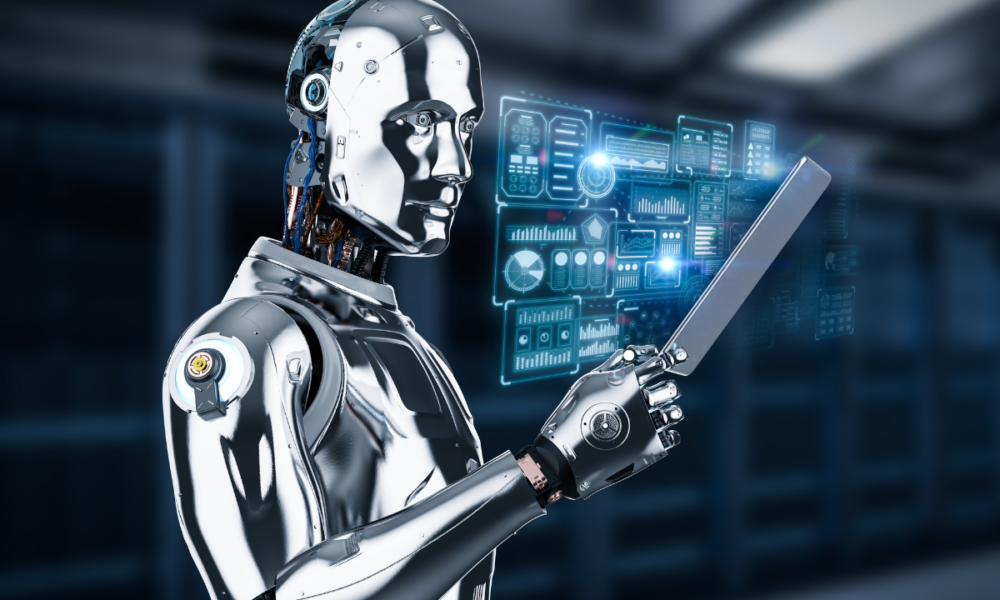In recent times, one of the big debates about the future of work has revolved around the impact of automation. Futurologists and sci-fi writers have been speculating on the implications of such technologies for society for decades. Imagine… androids… a robot in the physical layout of a human with the ability to learn and ‘think’ using true AI.
Meanwhile… back in the real world, increased development and adoption of software automation and robotic devices has been on the radar of businesses, policy advisors, governments and workers for a number of years now. Essentially, the big fear is that millions of people are left jobless by automation technologies.
Software automation eliminates repetitive, paper-based administrative manual tasks such as processing paper forms, and it is a widespread feature of the many thousands of cloud applications being routinely used by businesses worldwide. For recruitment agencies, a typical example is processing timesheets.
This rather low key version of automation technology is rather more impressively expressed in the automaton, or robot, a physical machine that has the ability to move autonomously and perform physical tasks independently, without direct control of a human operator.
Basic forms of this technology have been around since the late 1930s, made from Meccano, the construction ‘toy’. The first robotic manufacturing patent was granted in 1954. The use of the technology in the automotive sector was widely publicised in 1979 by the famous Fiat TV advert, ‘Hand built by Robots.’
Today it’s far more sophisticated. Basic versions of this technology are seen in items like vacuum cleaners and lawnmowers. Robots are also doing things that are far too hazardous for humans, such as nuclear plant clean up and inspection, bomb disposal and exploring distant planets, comets and asteroids from orbit and at the surface – environments and missions which are beyond human capability with current life support systems.
More practical, everyday examples are of restaurant robots that deliver food to tables, reception robots for greeting visitors and disinfection robots for hygiene purposes.
It may not have escaped the attention of recruiters that economies around the world are struggling with worker shortages. It is somewhat ironic that after years of fears that jobs are at risk because of automation, now there’s a shortage of workers, why isn’t software automation taking up the slack? And where are the robot workers when we need them?!
One simple answer is that the promise of automation and robotics has been somewhat over-egged. However, while there has no doubt been some exaggeration and unhelpful speculation, the prospects for the technology remain real.
A slightly more accurate answer is that there is a gap between what we actually need at the moment and what the technology can currently deliver.
The shortage of HGV drivers is a case in point. There are as many as 100,000 drivers required in the UK. Since as far back as the 1920s, self-driving technologies have been explored, with the first autonomous examples appearing in the 1980s. For heavy vehicles, military and mining industry applications have been at the leading edge. In 2015, Mercedes publicly showcased its pursuit of a commercial self-driving truck. The company currently attaches the year 2025 as a potential milestone for its efforts.
With such a demand for drivers, why can’t self-driving HGVs fill the gap? Well of course, incidents of self-driving cars causing accidents and fatalities are well publicised. It’s a question of capability – this technology simply isn’t safe enough for controlling a 38 tonne lorry on today’s roads.
There is also a massive shortage of staff for hospitality and the casual dining industry. However, for restaurant food service the situation is somewhat different to the logistics industry. Here, the answer is more likely to be one of simple economics. While robot table service technology is sufficiently advanced, the economics for anything other than major chains with deep cash reserves or access to investment capital is unrealistic.
Depending on the tasks being carried out, annual leasing costs may range from around £11,300 to £37,500 each, putting access to the technology beyond reach of independent restaurants and smaller chains.
One analysis is that the worker shortage crisis has simply come too early for software automation and robotics to provide the answers. For now, it looks as though agencies are going to have to try to contend with a tough recruiting climate where there are shortages of suitable applicants.
Fortunately, recruiters face no such problems with ETZ! ETZ is ready right now to help you meet the challenges facing the recruitment industry. Access to timesheet automation is straightforward and affordable. With ETZ as your RecTech partner, we help your agency to maximise ROI and obtain excellent value from technology.
ETZ’s leading back office solution also acts as a hub, allowing you to integrate your other favoured applications, such as Xero and Quickbooks for accounting, as well as dedicated RecTech platforms such as JobAdder and Bullhorn, further increasing efficiency and value.
To find out more about how we simplify the complexity of RecTech for agencies like yours, call us on 0800 311 2266 or book a demo.


Stimulating the job market and increasing opportunities for recruiters There is much speculation about the UK Budget scheduled for 30...
Read more

AI developing at astonishing pace To say that the recent rise of AI has been meteoric would be to do...
Read more

Does RTO make it difficult for recruiters to attract candidates? Although the Covid pandemic seems to be fading away, it...
Read more